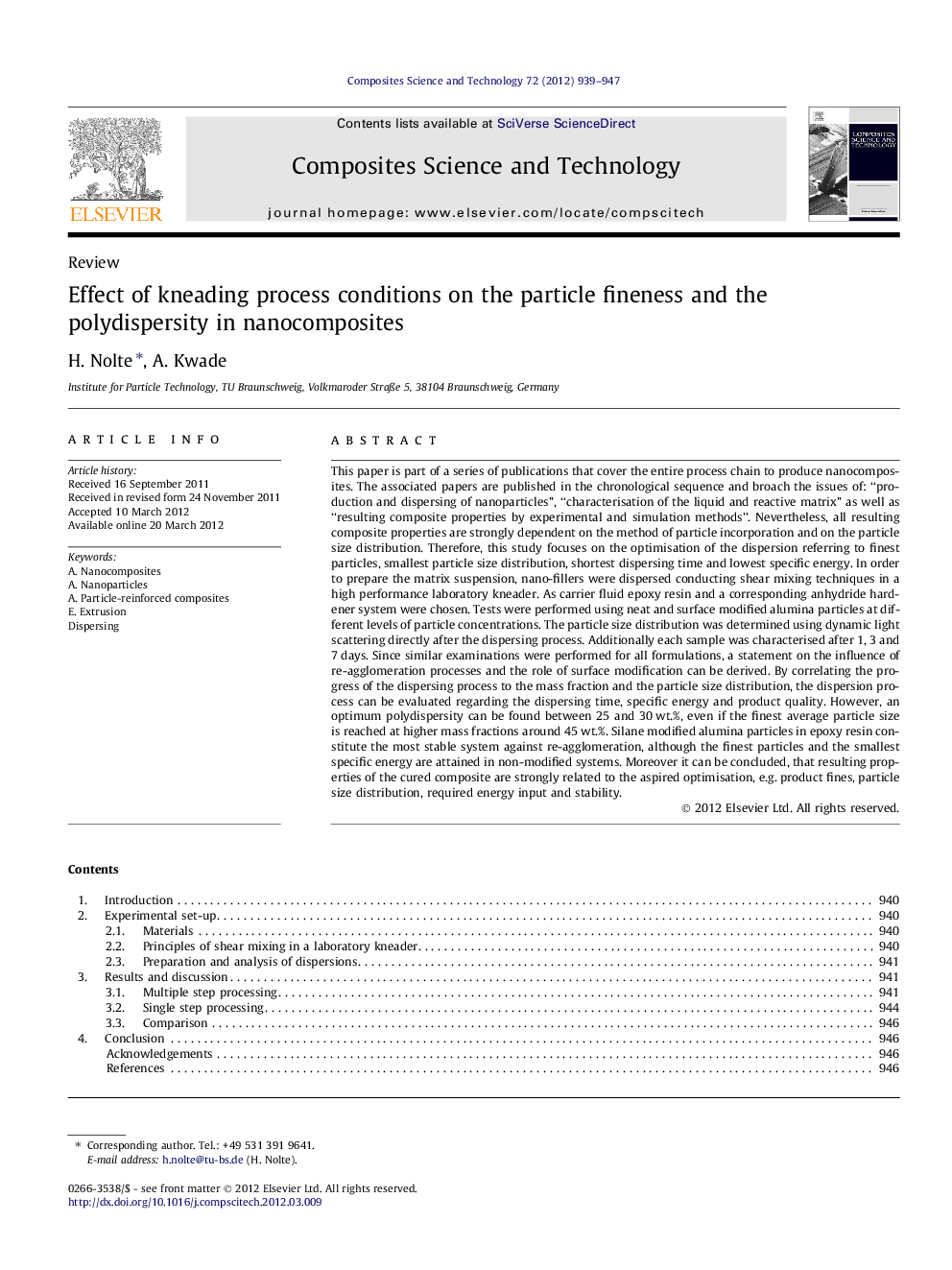| کد مقاله | کد نشریه | سال انتشار | مقاله انگلیسی | نسخه تمام متن |
|---|---|---|---|---|
| 820704 | 906717 | 2012 | 9 صفحه PDF | دانلود رایگان |
عنوان انگلیسی مقاله ISI
Effect of kneading process conditions on the particle fineness and the polydispersity in nanocomposites
دانلود مقاله + سفارش ترجمه
دانلود مقاله ISI انگلیسی
رایگان برای ایرانیان
کلمات کلیدی
موضوعات مرتبط
مهندسی و علوم پایه
سایر رشته های مهندسی
مهندسی (عمومی)
پیش نمایش صفحه اول مقاله

چکیده انگلیسی
This paper is part of a series of publications that cover the entire process chain to produce nanocomposites. The associated papers are published in the chronological sequence and broach the issues of: “production and dispersing of nanoparticles”, “characterisation of the liquid and reactive matrix” as well as “resulting composite properties by experimental and simulation methods”. Nevertheless, all resulting composite properties are strongly dependent on the method of particle incorporation and on the particle size distribution. Therefore, this study focuses on the optimisation of the dispersion referring to finest particles, smallest particle size distribution, shortest dispersing time and lowest specific energy. In order to prepare the matrix suspension, nano-fillers were dispersed conducting shear mixing techniques in a high performance laboratory kneader. As carrier fluid epoxy resin and a corresponding anhydride hardener system were chosen. Tests were performed using neat and surface modified alumina particles at different levels of particle concentrations. The particle size distribution was determined using dynamic light scattering directly after the dispersing process. Additionally each sample was characterised after 1, 3 and 7Â days. Since similar examinations were performed for all formulations, a statement on the influence of re-agglomeration processes and the role of surface modification can be derived. By correlating the progress of the dispersing process to the mass fraction and the particle size distribution, the dispersion process can be evaluated regarding the dispersing time, specific energy and product quality. However, an optimum polydispersity can be found between 25 and 30Â wt.%, even if the finest average particle size is reached at higher mass fractions around 45Â wt.%. Silane modified alumina particles in epoxy resin constitute the most stable system against re-agglomeration, although the finest particles and the smallest specific energy are attained in non-modified systems. Moreover it can be concluded, that resulting properties of the cured composite are strongly related to the aspired optimisation, e.g. product fines, particle size distribution, required energy input and stability.
ناشر
Database: Elsevier - ScienceDirect (ساینس دایرکت)
Journal: Composites Science and Technology - Volume 72, Issue 9, 21 May 2012, Pages 939-947
Journal: Composites Science and Technology - Volume 72, Issue 9, 21 May 2012, Pages 939-947
نویسندگان
H. Nolte, A. Kwade,